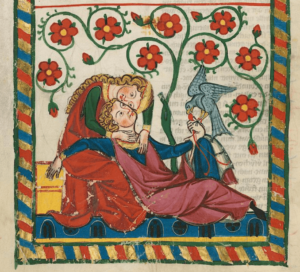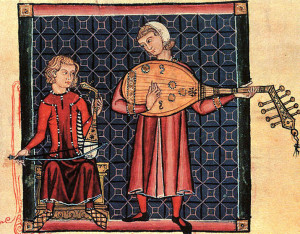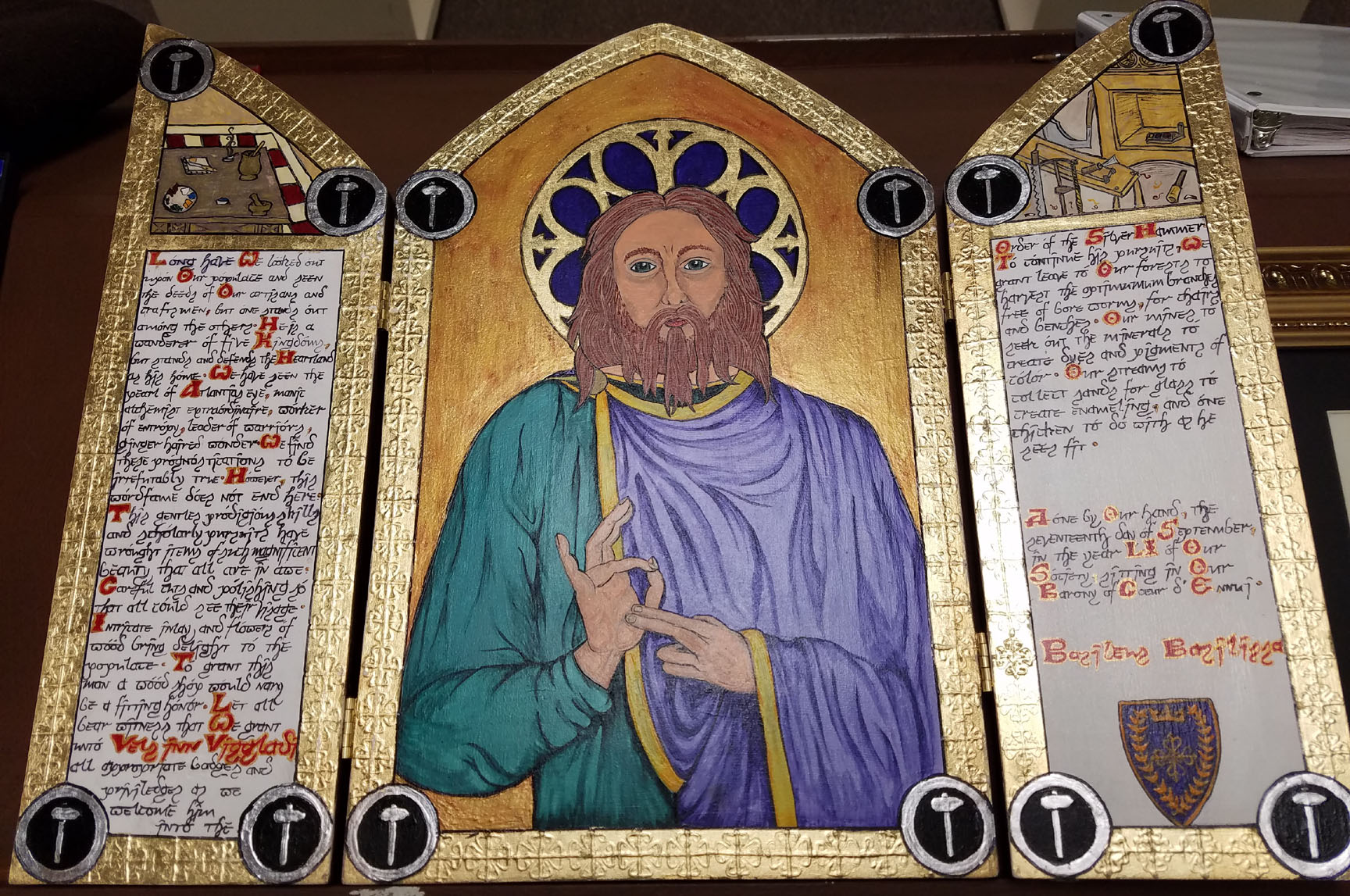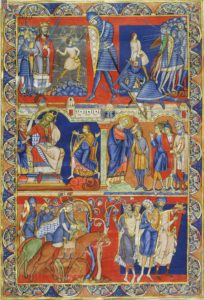By THL Lorraine Devereaux
As some of you know, I’m a nerd about calendars and clocks. So this weekend I decided to figure out the Roman-style date for Valentine’s Day.
First I needed to know whether February was a month when the Ides fell on the 13th or the 15th. In only four months of the year does the Ides fall on the 15th – March, May, July and October. Remember how Caesar was killed on the Ides of March? For years I thought the Ides was always the 15th. That would have been too easy.
Although all four months in which the Ides falls on the 15th have 31 days, not all months with 31 days are the same. In January, August and December the Ides falls on the 13th.
Once I determined the Ides fell on the 13th, and that my chosen date (the 14th) fell after the Ides, I needed know how many days there were in the month. This is especially tricky with February, since it is not only the shortest month, but once every four years it is a day longer.
Why do I need to know how long the month is? Because the Romans, in their infinite wisdom, decided that counting from the beginning to the end of the month was too simple. They preferred to count from the end of the month to the middle (the Ides). Then they counted from the Ides to the Nones (usually the 5th, but in those four special months, it’s on the 7th). And they counted from the Nones to the Kalends, or the first day of month.
Now, when I first got into this, I thought the “Nones” fell on the 9th. Nones means nine, right? How mistaken I was. It actually means nine days before the Ides. If the Ides is on the 13th, the Nones is nine days earlier, on the 5th. Of course in those four months when the Ides falls on the 15th the Nones is on the 7th. Luckily, the Kalends doesn’t move.
So, if the date you’re interested in is February 3, the Roman date is “iii nonis Februarius” (three days before the Nones of February). And if the date you’re interested in is February 9 the Roman date is “v idus Feburarius” (five days before the Ides of February).
If you’re trying to do the math, and you can’t make it work, it’s because the Romans counted inclusively. The day before the Nones is also the second day before the Nones.
I had a hard time wrapping my head around this. Finally I remembered sitting in church on Easter morning. As I child I listened to the priest say “On the third day he arose.” I remember counting on my fingers – from Friday afternoon to Saturday afternoon is one day, from Saturday afternoon to Sunday morning is two days, where’s the third day? I was told for the early Church (the “Roman” church) it was one day for Friday, one day for Saturday and one day for Sunday (three days).
So the Nones is nine days before the Ides, because both the Nones and Ides are counted. And the Kalends is five days before the Nones, because the Nones and the Kalends are both counted.
Which brings us to the dates after the Ides. That’s the majority of the month. Any date after the Ides is counted as so many days before the Kalends of the next month. So for February 14, the date is written as “xvi kalendas Martius.” That’s 16 days before the Kalends of March. Washington’s birthday, Feburary 22, is “viii kalendas Martius” (you’ve got it – 8 days before the Kalends of March). Here’s a list of how you write the 14th day of January, February, March and April:
January 14 xix kalendas Februarius
February 14 xvi kalendas Martius
March 14 pridie idus Martius*
April 14 xviii kalendas Maius
*Calling the day before the Ides (or Kalends or Nones) “pridie” solves the problem of having to call the day both ii idus and i idus.
The 14th of the month is 19 days before, or 16 days before, or 18 days before the Kalends of the next month depending on how long the month is. Don’t ask me how such a convoluted system lasted for nearly two thousand years.
Two points to keep in mind. First, the tale ending of Roman nouns changes depending on how the word is used. I don’t pretend to understand the system. Sometimes it’s nones, sometimes it’s nonis, sometimes I see it as nonae. February is Februarias, Februariis or Februarius depending on usage. Second, I’ve used lower case Roman numerals because most of the medieval examples I’ve seen use lower case. The Romans themselves would have used capital letters (they used all caps all the time). The Carolingians loved the little letters. You may see examples of both.
If you want to see how all this works using a medieval Book of Hours calendar, check out this Khan Academy video created by the Getty Museum: https://www.khanacademy.org/humanities/medieval-world/medieval-europe/v/medieval-calendar (4:29 minutes).
If you’re not interested in figuring it out a date for yourself, go to http://www.lieberknecht.de/~prg/calendar.htm. A medieval-minded German (Otfried Lieberknecht) put together a calendar utility that figures out any date, past or present, for you. It will also take a Roman-style date and translate it into modern reckoning.
Useful Resources:
Bridget Ann Henisch, The Medieval Calendar Year (University Park, Penn., Pennsylvania State University Press, 1999). This work analyzes the Labors of the Months and similar themes in medieval calendars. It includes many examples of medieval calendars in Books of Hours. It also includes a useful Appendix that details how to determine a date using Roman-style dating.
“Calendarium” includes the Roman sections of William Smith’s A Dictionary of Greek and Roman Antiquities (John Murray, London, 1875). It goes into depth about the early Roman calendar and Caesar’s reforms, but near the end it has a useful chart for figuring the date using Roman-style dating: http://penelope.uchicago.edu/Thayer/E/Roman/Texts/secondary/SMIGRA*/Calendarium.html.
“Some Notes on Medieval English Genealogy” includes calendar charts for each year in the 11th through 16th centuries at http://www.medievalgenealogy.org.uk/cal/medcal.shtml.

Lovebirds in the 14th-century Codex Manesse (Cod. Pal. germ. 848, f. 249v). Universitätsbibliothek Heidelberg, CC BY-SA
 Unto the Populace of Calontir, Greetings!
Unto the Populace of Calontir, Greetings!







You must be logged in to post a comment.